For example, Sub-Saharan Africa is largely rural, but is also the region with the fastest urbanization rates. Currently, almost 40 percent of the people live in cities in Sub-Saharan Africa, but this is expected to grow to 60 percent or more by 2050. So while urbanization provides economic and social opportunity, it can overburden traditional municipal resource and service delivery approaches.
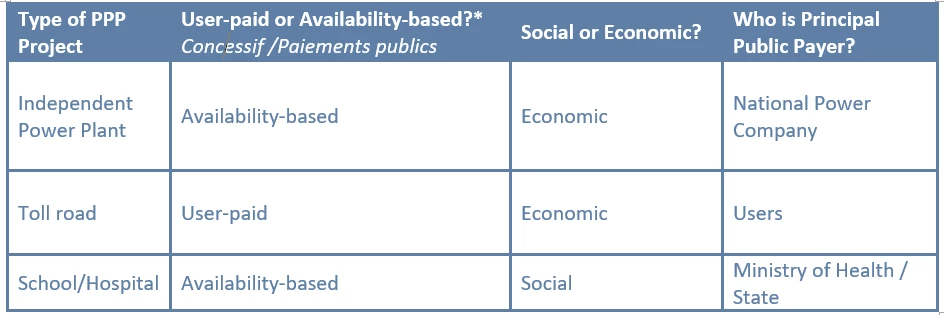
Fortunately, challenge also brings opportunity. And a recent IFC analysis found that cities in Sub-Saharan Africa have the potential to attract more than $1.5 trillion in climate-related investments by 2030. But the key question remains, how can cities ensure sustainable development while reducing the GHG impacts of their future growth? Or in short, how do cities become climate-smart?
In order to figure out what kind of investments will be the most impactful, IFC assessed community GHG emissions for 14 African cities. Using an early prototype of a city-specific version of IFC’s EDGE tool (based on the World Bank Group’s CURB tool framework), we wanted to highlight the extent of the challenge, determine potential measures, and quantify their benefits in terms of GHG emission reductions at the city level.
Let’s look specifically at the large port city of Cotonou, Benin. By looking at Cotonou’s GHG inventory, we were able to find out where most of Cotonou’s emissions were coming from (hint: the building and transport sectors), and this helped us recommend the most suitable mitigation measures.
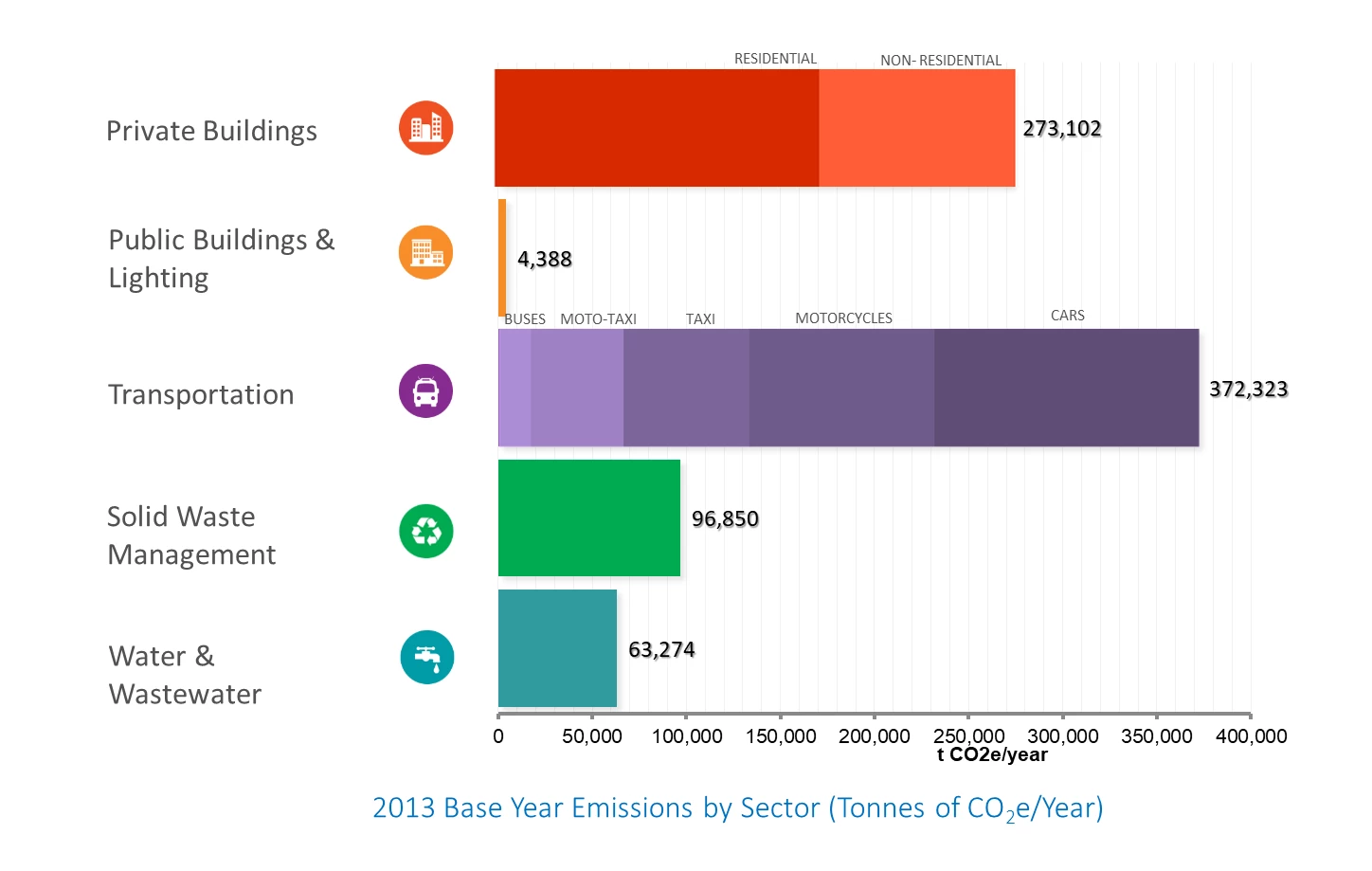

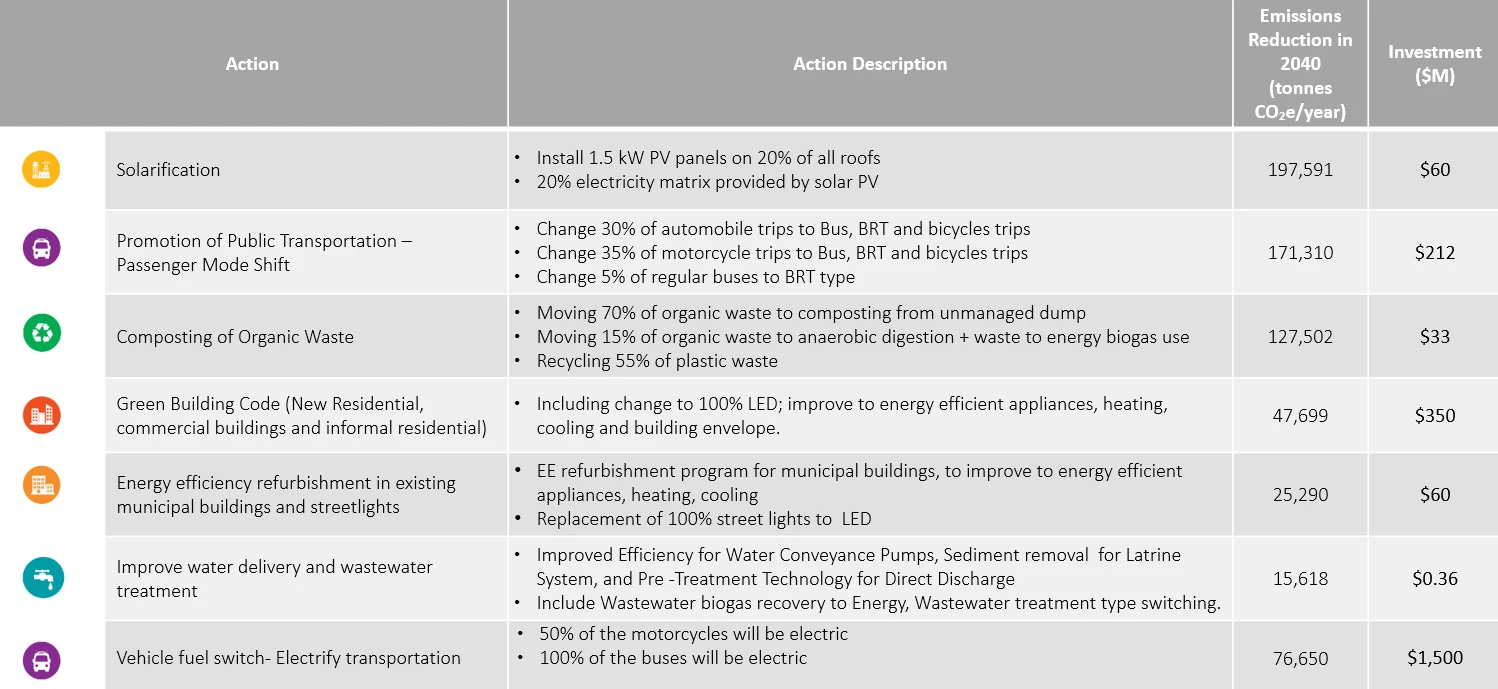
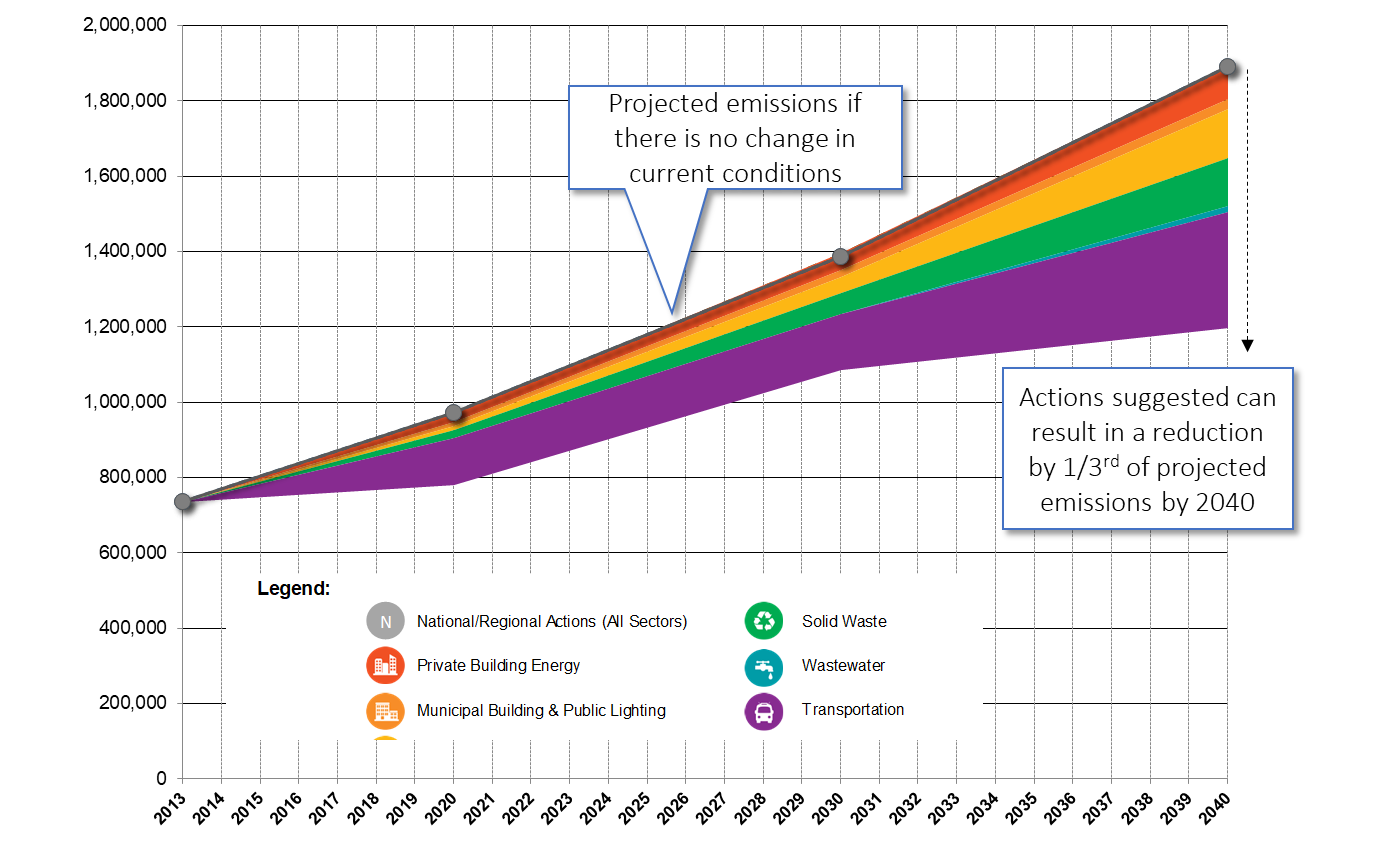
Urban transport (purple segment), however, accounts for a large portion of emissions across the majority of the 14 cities, and therefore has the greatest scope for emissions reduction in this case. Policies that encourage use of public transportation, vehicle electrification, and improved vehicle fuel efficiency can help drive emissions down. There are also co-benefits: greening urban transport can reduce traffic congestion and improve local air quality, which can make cities more appealing to new residents.
While our analysis shows that emissions from solid waste (green segment) and wastewater (blue segment) represent fewer current emissions, they have high reduction potential and livability co-benefits. For Kinshasa, DRC and Kigali, Rwanda, where waste and wastewater constitute a relatively high share of emissions, solid waste and wastewater management can drastically reduce the GHG footprint. Effective approaches include improving recycling, waste and water management practices and investing in more efficient waste infrastructure.
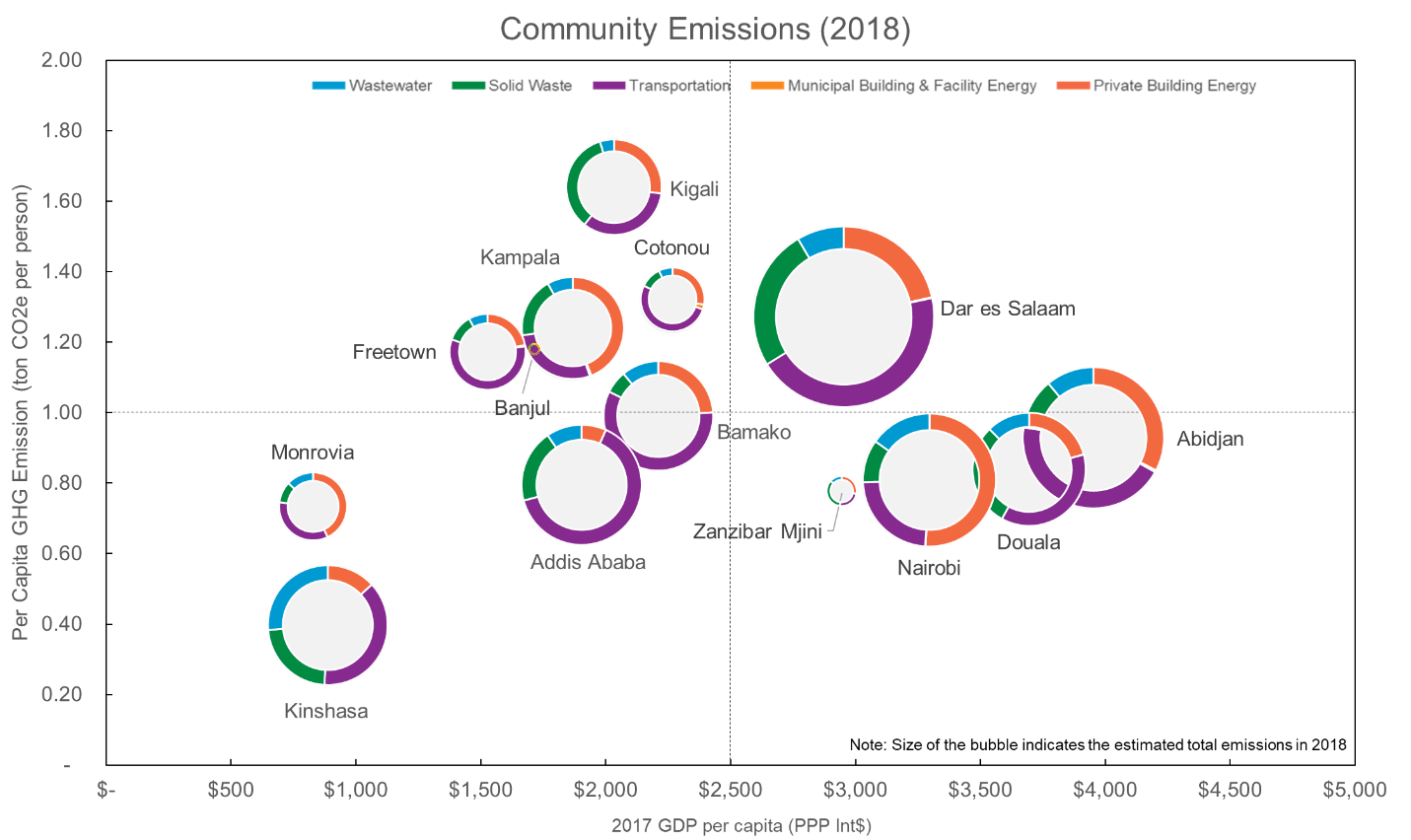
With thanks to Jagabanta Ningthoujam and Stefania D Annibali, Energy and Climate Consultants at the Climate Business Department in IFC, for their valuable contributions.
For more information, and to learn more about how we’re implementing this analysis in cities around the world, see:
- IFC’s work on cities
- World Bank’s City Resilience Program
- C40 Cities: Why Cities
- World Bank’s Urban Development work
- Subscribe to our Sustainable Communities newsletter
- Follow @WBG_Cities on Twitter




Join the Conversation